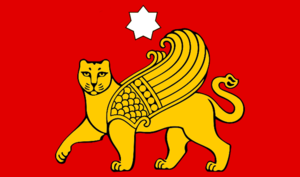Difference between revisions of "Koman people"
| Line 40: | Line 40: | ||
| related = [[Balak people|Balaks]], [[Mishar people]] | | related = [[Balak people|Balaks]], [[Mishar people]] | ||
}} | }} | ||
'''Komans''' ([[Xālxāra]] IPA: /xɒ:lxɒrä/ or Xāman IPA: /xɒmä:n/) are a [[Vaniuan peoples|Vaniuan]] ethnic group that originally formed in the [[Golden Steppes]] during the 1th–7th centuries, primarily from Eastern Vaniuan and pre-Vaniuan tribes that moved from Central Vaniu around 2500-2000 BCE and came to inhabit the present-day lands of [[Komania]] through several large-scale migrations after the collapse of the [[Kalkali]] nomadic state, with large contributions from former [[Mahavic]] tribes in the area. | '''Komans''' ([[Xālxāra]] IPA: /xɒ:lxɒrä/ or Xāman, IPA: /xɒmä:n/) are a [[Vaniuan peoples|Vaniuan]] ethnic group that originally formed in the [[Golden Steppes]] during the 1th–7th centuries, primarily from Eastern Vaniuan and pre-Vaniuan tribes that moved from Central Vaniu around 2500-2000 BCE and came to inhabit the present-day lands of [[Komania]] through several large-scale migrations after the collapse of the [[Kalkali]] nomadic state, with large contributions from former [[Mahavic]] tribes in the area. | ||
==Language== | ==Language== | ||
Revision as of 13:34, 28 October 2017
 Flag of the Komans | |
| Regions with significant populations | |
|---|---|
| 42,904,651 | |
| 500,000 ≥ | |
| 10,000 | |
| 7,202 | |
| Sotanxina | 13,334 |
| Overseas | 15,000 ≥ |
| Languages | |
| Koman | |
| Religion | |
| Thaghaism | |
| Related ethnic groups | |
| Balaks, Mishar people | |
Komans (Xālxāra IPA: /xɒ:lxɒrä/ or Xāman, IPA: /xɒmä:n/) are a Vaniuan ethnic group that originally formed in the Golden Steppes during the 1th–7th centuries, primarily from Eastern Vaniuan and pre-Vaniuan tribes that moved from Central Vaniu around 2500-2000 BCE and came to inhabit the present-day lands of Komania through several large-scale migrations after the collapse of the Kalkali nomadic state, with large contributions from former Mahavic tribes in the area.
Language
Koman is a member of the Vaniuan family from the Kalkalic (Northeastern) sub-group of Eastern Vaniuan languages, spoken in present-day Komania and it's surroundings, the language itself is distinguished by it's total lack of affricates, fusional nature and large substratum of pre-Vaniuan and Mahavic loanwords, along with slightly patalised fricatives and nasals.
The Koman language has been historically written with a cursive variant of the Mahavic script, between 13th and 17th century and was at the time widely adopted by commoners for daily use, while the Vaniuan script remained obscure for centuries it was readopted and implemented shortly after the fall of the Great Horde, through several policies of re-education. Today the language is officially written with the Vaniuan script, although it can be common to see Mahavic scriptures in traditional mōrāms and holy places, with holy books often published with both scripts to maintain a sense of traditionalism.
Koman is the official language of Komania. It is also spoken on reduced pockets around the surrounding countries of Balakia and the southern territories.